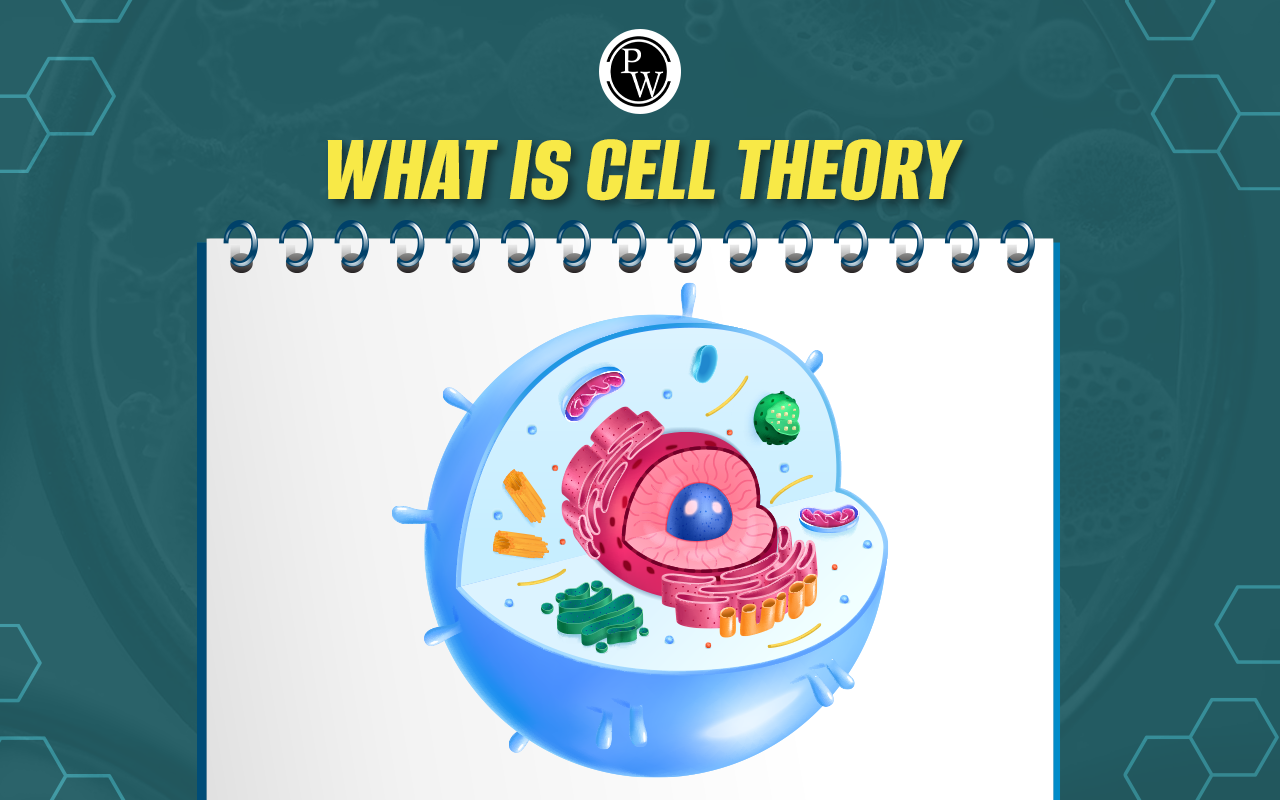
Okazaki Fragments Definition: Cell division is a complex biological process involving the replication of a cell's genetic information stored in long DNA strands. This replication is facilitated by enzymes called DNA polymerases. Each DNA strand is a template for DNA polymerases to create a complementary strand. During this process, one strand at the replication fork is continuously synthesized in the 5′ to 3′ direction (known as the leading strand).
In contrast, the other strand (known as the lagging strand) is synthesized in the 3′ to 5′ direction in short fragments. These short fragments are called Okazaki fragments. Understanding Okazaki fragments is crucial for the NEET exam , as they play a significant role in DNA replication. The article below elaborates on the discovery, formation, significance, and more about Okazaki fragments.What are Okazaki Fragments?
Okazaki fragments represent brief, discontinuous stretches of DNA nucleotides that are pieced together to form the lagging strand during the replication of DNA. These fragments are comprised of a developing DNA strand primed by RNA and a template strand. They originate from RNA in both prokaryotic and eukaryotic organisms. Okazaki fragments result in a series of discontinuities within the lagging DNA strand, which are visible once the replication fork has progressed beyond them. These gaps indicate areas where one or more nucleotides are absent. To complete the processing of these fragments, several steps must be undertaken:- Elimination of the RNA primers using either RNase H or Pol I.
- Filling of the gaps with DNA through the action of Pol I.
- Connection of the ends through DNA ligase.
Okazaki Fragments Discovery
In 1963, Tsuneko and Reiji Okazaki proposed a model for DNA replication, suggesting that daughter DNA strands are produced discontinuously in vivo. They hypothesized that the lagging strand, which grows in the 3’–5′ direction, is synthesized in short fragments in the 5’–3′ direction, which are then connected to elongate the strand. Okazaki conducted a pulse-chase experiment to test this, where radioactive nucleotides were briefly incorporated into replicating DNA, and then non-radioactive nucleotides were used to isolate the DNA. The results supported their hypothesis, naming these short DNA fragments as "Okazaki fragments" in 1968.Formation of Okazaki Fragments
Okazaki fragments are short sections of DNA that form during the discontinuous synthesis of the lagging strand in DNA replication. They play a crucial role in enabling the synthesis of both daughter strands required for cell division. The primary function of Okazaki fragments is to allow DNA polymerase to synthesize the lagging strand in segments, as it is not properly oriented for continuous synthesis. During DNA replication, as DNA polymerase synthesizes a portion of the lagging strand, it must wait for helicase to open up more of the DNA helix upstream. This waiting period results in the formation of Okazaki fragments on the lagging strand. When helicase opens up the DNA, primase lays down a new complementary RNA primer. This primer allows DNA polymerase to bind to the DNA and create the new Okazaki fragment.Why Okazaki Fragments are Formed?
In most organisms, DNA serves as the genetic material. DNA is double-stranded, consisting of two antiparallel DNA strands linked by hydrogen bonds. During cell division, the entire genome's DNA must be replicated, doubling the DNA in the original cell. DNA replication occurs in a semi-conservative manner, where one strand of the newly created DNA is the parent or original strand. Therefore, both strands must act as templates for DNA replication. DNA polymerases are enzymes involved in DNA replication, synthesizing DNA only in the 5' to 3' direction. However, due to the antiparallel nature of double-stranded DNA, DNA synthesis must occur in both directions. Hence, fragments form during the synthesis of the lagging template strand. DNA polymerase typically adds nucleotides in the 5' to 3' direction. It can continuously add nucleotides to the growing strand on the leading strand. However, when the strand reaches the 5' end, the synthesis of the newly synthesized DNA strand is temporarily halted. Another DNA synthesis then begins at the replication fork, the location where DNA unwinding begins, essential for synthesizing new DNA strands on the parent strands. After the replication fork moves along the double-strand, DNA polymerase can join nucleotides on the lagging strand. However, synthesis is interrupted when it reaches the 5' end of the RNA primer of the already synthesized DNA stretch. Consequently, DNA synthesis on the lagging strand is not continuous, resulting in the formation of Okazaki fragments.| Other NEET Biology Topics | ||
|---|---|---|
| Ribosomes | Pollination | Apomixis |
| Centrosome | Embryo | Tissues |
| Rhizopus | Pinus | Gluconeogenesis |
| Chlamydomonas | Chara | Ribs |
Okazaki Fragments Functions
Okazaki fragments are short segments of DNA that are synthesized during the process of DNA replication on the lagging strand. Here is a detailed explanation of the formation and function of Okazaki fragments in DNA replication:- DNA Replication Process: DNA replication is the process by which a cell makes an identical copy of its DNA. This process is essential for cell division and ensures that each new cell receives a complete set of genetic information.
- Replication Fork Formation: DNA replication occurs at a structure called the replication fork, which is formed when the double-stranded DNA molecule is unwound by enzymes called DNA helicases. The unwinding of the DNA molecule creates two single-stranded template strands.
- DNA Polymerase Activity: Once the DNA molecule is unwound, DNA polymerases begin to synthesize new DNA strands using the single-stranded template strands. DNA polymerases can only add nucleotides to the growing DNA strand in the 5' to 3' direction.
- Leading and Lagging Strand: During DNA replication, two new DNA strands are synthesized: the leading strand and the lagging strand. The leading strand is synthesized continuously in the 5' to 3' direction, following the movement of the replication fork. However, the lagging strand is synthesized discontinuously in short fragments called Okazaki fragments.
- Okazaki Fragment Synthesis: The discontinuous synthesis of the lagging strand is due to the orientation of the template strand. The template strand for the lagging strand is oriented in the 3' to 5' direction, which is opposite to the direction of DNA synthesis.
- DNA Polymerase Action on Lagging Strand: To overcome this orientation problem, DNA polymerase synthesizes short fragments of DNA in the 5' to 3' direction away from the replication fork. These short DNA fragments are known as Okazaki fragments.
- Joining of Okazaki Fragments: After an Okazaki fragment is synthesized, an enzyme called DNA ligase joins the fragment to the previously synthesized Okazaki fragment. This process continues until the entire lagging strand is synthesized.
- Completion of Lagging Strand: Once all the Okazaki fragments have joined, another enzyme called DNA polymerase I removes the RNA primers from the Okazaki fragments and replaces them with DNA nucleotides. This ensures that the final lagging strand is a complete and continuous molecule of DNA.
Sexual Reproduction in Flowering Plants
Okazaki Fragments Significance
Okazaki fragments are brief segments of DNA formed during the replication of DNA. They are crucial for replicating the lagging strand, one of the two strands of DNA copied during cell division. These fragments are important for several reasons:| NEET Exam Important Links | |
|---|---|
| NEET Biology Syllabus | NEET Biology Diagrams |
| NEET Biology MCQ | NEET Biology Chapter wise Weightage |
| NEET Biology Notes | NEET Previous Year Question papers |
Okazaki Fragments FAQs
What are Okazaki fragments?
Okazaki fragments are short segments of DNA produced during the discontinuous replication of the lagging strand. In bacterial cells, these fragments typically range from 1000-2000 nucleotides, while in eukaryotic cells, they are approximately 100-200 nucleotides long.
When were Okazaki fragments discovered?
Okazaki fragments were discovered in 1968 by Reiji and Tsuneko Okazaki, who identified the mechanism by which the lagging strand of DNA is replicated through these fragments.
Why are Okazaki fragments formed only on the lagging strand?
Okazaki fragments are formed on the lagging strand to ensure that DNA synthesis occurs in the necessary 5' to 3' direction on that strand.
Why are they called Okazaki fragments?
These fragments are named after the scientist who discovered them, Reiji Okazaki, in 1968. They are crucial because they represent how one strand of the new DNA daughter strand is synthesized during DNA replication.
What is the purpose of Okazaki fragments?
Okazaki fragments are vital because they allow for the synthesis of both daughter strands required for cell division, particularly when the lagging strand undergoes discontinuous replication due to a DNA strand break.
Who joins Okazaki fragments?
DNA ligases are primarily responsible for joining adjacent Okazaki fragments on the lagging strand of the replication fork. However, they play a crucial role in any process requiring sealing phosphodiester bonds in the DNA backbone.
🔥 Trending Blogs
Talk to a counsellorHave doubts? Our support team will be happy to assist you!

Free Learning Resources
PW Books
Notes (Class 10-12)
PW Study Materials
Notes (Class 6-9)
Ncert Solutions
Govt Exams
Class 6th to 12th Online Courses
Govt Job Exams Courses
UPSC Coaching
Defence Exam Coaching
Gate Exam Coaching
Other Exams
Know about Physics Wallah
Physics Wallah is an Indian edtech platform that provides accessible & comprehensive learning experiences to students from Class 6th to postgraduate level. We also provide extensive NCERT solutions, sample paper, NEET, JEE Mains, BITSAT previous year papers & more such resources to students. Physics Wallah also caters to over 3.5 million registered students and over 78 lakh+ Youtube subscribers with 4.8 rating on its app.
We Stand Out because
We provide students with intensive courses with India’s qualified & experienced faculties & mentors. PW strives to make the learning experience comprehensive and accessible for students of all sections of society. We believe in empowering every single student who couldn't dream of a good career in engineering and medical field earlier.
Our Key Focus Areas
Physics Wallah's main focus is to make the learning experience as economical as possible for all students. With our affordable courses like Lakshya, Udaan and Arjuna and many others, we have been able to provide a platform for lakhs of aspirants. From providing Chemistry, Maths, Physics formula to giving e-books of eminent authors like RD Sharma, RS Aggarwal and Lakhmir Singh, PW focuses on every single student's need for preparation.
What Makes Us Different
Physics Wallah strives to develop a comprehensive pedagogical structure for students, where they get a state-of-the-art learning experience with study material and resources. Apart from catering students preparing for JEE Mains and NEET, PW also provides study material for each state board like Uttar Pradesh, Bihar, and others
Copyright © 2025 Physicswallah Limited All rights reserved.
Get App









